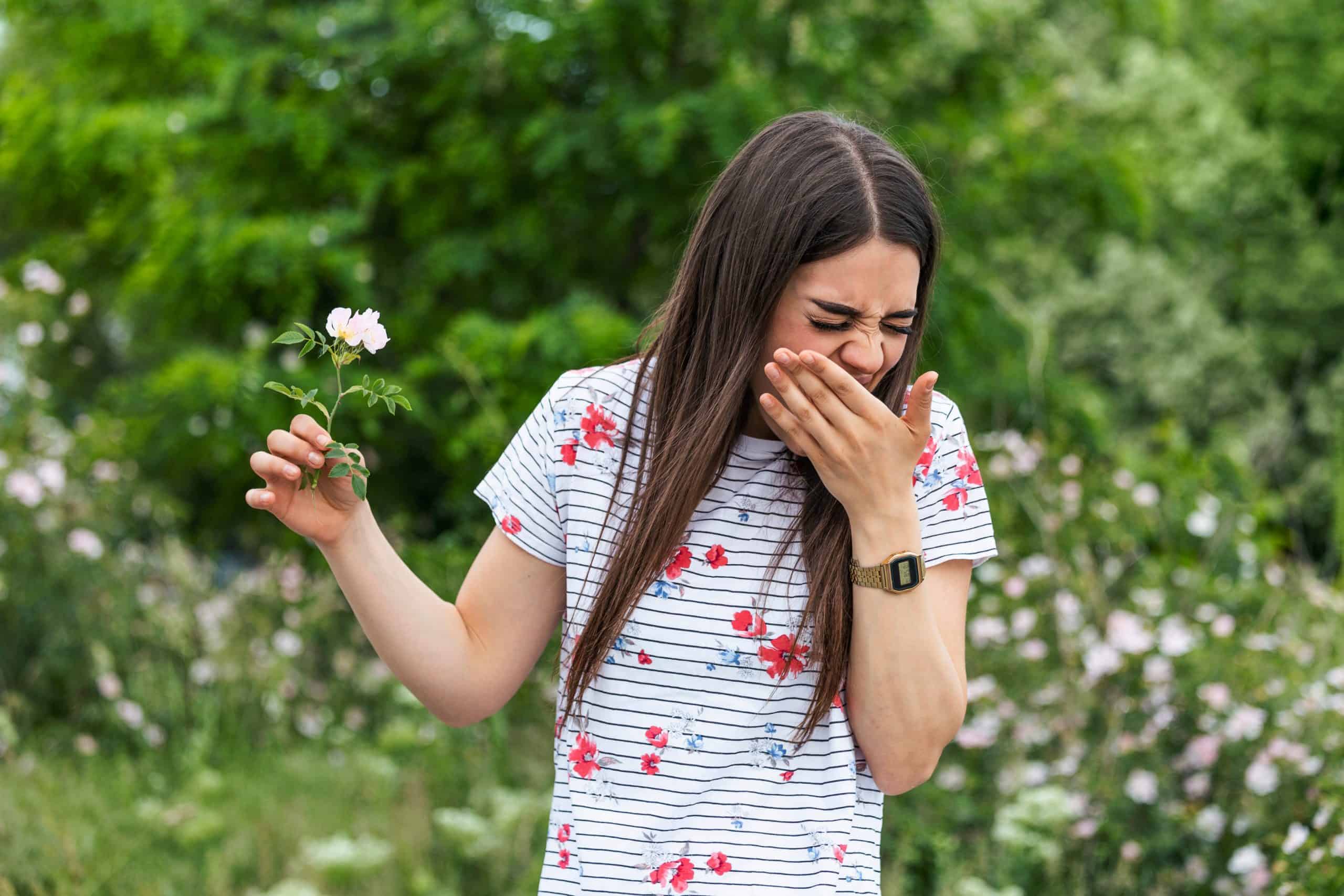Happy Allergy Season… Or as I like to call it, Sneeze-tember!
Sound familiar?
Around 1 out of 5 Australians (children and adults) suffer from allergic rhinitis, commonly known as hay fever.
Symptoms can range from mild to moderate or severe and are increasingly common in those who have asthma (up to 80%). Conversely, up to 30% of those with allergic rhinitis will also have asthma.
Symptoms include:
- a runny or blocked nose
- sneezing
- itchy or watery eyes

If severe enough, it can impact lifestyle with
- sleep disturbances
- poor concentration
- headaches
- in children: increased ear infections
- in adults: increased sinus infections
Severity can lead to increased time off school and work, resulting in decreased productivity and increased hospitalisations.
There are two main types of allergic rhinitis:
- Seasonal allergic rhinitis
- Perennial allergic rhinitis
Seasonal allergic rhinitis usually occurs at times of the year when high amounts of pollens are in the air. Typically, this occurs in spring or early summer.
Perennial allergic rhinitis typically is present all year round and is triggered by environmental allergens such as house dust mites, pollens and animals.

Management of symptoms:
- Avoidance of known allergens can help to reduce symptoms.
- House dust mites – regular washing of bedding in hot water and use of dust mite resistant covers.
- Pets – keeping pets outside of bedrooms and outside of the house (if possible)
- Mould – removal of visible mould and adequate ventilation
- Pollen – staying indoors when pollen counts are high, on windy days or during thunderstorms.
You can check the pollen counts in your area here: https://auspollen.edu.au
It is important to discuss your symptoms with either your doctor or pharmacist.
If you are unsure what is triggering your hay fever, your doctor may recommend allergy testing (blood or skin prick) or consider referral to an allergy specialist.

There are many over-the-counter medications that can be utilised to manage symptoms.
If you have asthma, maintaining control of your asthma may help to reduce hay fever and vice versa.
Similar to asthma medications, treatments for hay fever can be classified as:
- preventers (such as intranasal corticosteroid medications) and
- relievers (oral or inhaled antihistamines as well as antihistamine eyedrops).
Non-drowsy antihistamines are helpful for symptoms such as itching, sneezing and watery eyes.
Intranasal corticosteroids are helpful if you have nasal congestion or a feeling of a blocked nose. If symptoms are persistent, it may be beneficial to use these on a more regular basis. These medications are generally safe to use, and some preparations are safe for children aged two years and up.
Decongestants can help unblock the nose but should not be used for more than a few days as they may cause symptoms to worsen. These should be avoided in patients known to have high blood pressure.
Saline nasal sprays help relieve symptoms and can be used frequently with no side effects.
If symptoms cannot be controlled, it may be helpful to see an allergist or immunologist to discuss if long-term therapy (immunotherapy) may be of benefit.
This therapy is also known as desensitisation. It involves exposure (either orally or by injection under the skin) to increasing amounts of the known allergen over three to five years.
Here at AusTrials, we are researching a potential new treatment for the management of allergic rhinitis. Check our Current Studies page for more details.

